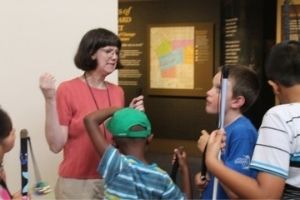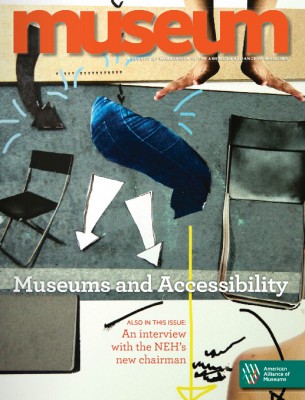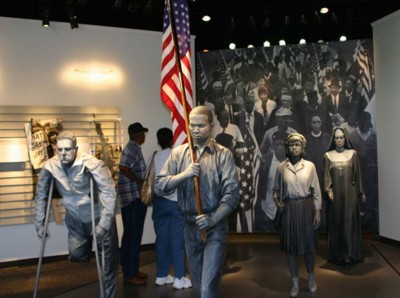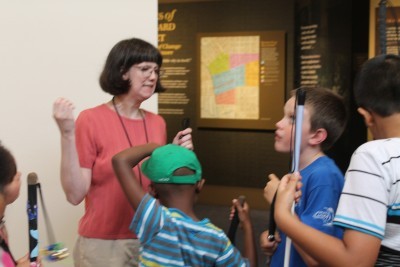A Museum for Everyone

A blog post by Graham Humphrey, Visitor Services Coordinator. To read more posts by Graham click HERE.
Did you know that more than 56 million Americans (about 1 in 5) have some kind of disability? This month’s issue of the American Alliance of Museum’s (AAM) magazine focuses on Museums and Accessibility and got me thinking how the Jewish Museum of Maryland can better engage with our visitors. I was excited to read about new partnerships between museums and organizations that serve individuals who have autism and Alzheimer’s and efforts that have already been made in other institutions to increase access. For people with visual disabilities, museums are using audio guides, large-print labels as well as tactile tours. For those who are hard of hearing, institutions offer sign-language interpreted tours or assistive listening devices. I agreed with many of the points in Beth Bienvenu’s article such as the importance of incorporating universal design principles throughout the Museum, partnering with local disability organizations to develop new audiences, training all staff on how to provide proper accommodations and taking steps to recruit staff and volunteers with disabilities.

Another article in the AAM magazine discusses how museums need to include a wider range of narratives in their exhibitions and programs to reflect a more diverse community of ethnic minorities as well as individuals with disabilities. For instance, at the NPS’s Lowndes Interpretive Center located along the Selma to Montgomery National Historic Trail in Alabama, there is a statue of Jim Letherer, a one-legged Jewish man who marched with Martin Luther King from Selma to Montgomery. The exhibit is about the march and voting rights, but also includes disability as part of the story.

I learned that accessibility does not have to be limited to those with disabilities. In Philadelphia, the Greater Philadelphia Cultural Alliance worked with local teens to form Students at Museums in Philly (STAMP), which provides free museum admission to Philadelphia teens. This program aims to increase access to all the arts and culture Philadelphia has to offer while removing any financial barriers that may prevent teens from visiting a museum.
At JMM, we have recently made some progress on accessibility issues such as adding automatic doors to our front entrance and by developing Braille program materials. Robyn Hughes has done an amazing job trying to make the Museum more inviting to those with special needs, such as by arranging a visit for the National Federation of the Blind’s Braille Enrichment for Literacy and Learning. We also have a wheelchair available for those who have mobility issues, can offer a closed-captioning video of the Synagogue tour for those who are unable to climb the steps of Lloyd Street or B’nai Israel Synagogues and have tactile elements within our exhibits.

We are about to bring on a consultant to conduct an accessibility assessment at the Museum to determine how we can enhance accessibility on multiple levels including physical and programmatic access. Other possible improvements include developing new tours for people with learning disabilities and improving Museum signage. We are committed to ensuring that JMM remains a place where all feel welcomed and that everyone is able to find a part of themselves here. We are eager to begin this dialogue. Please stay tuned for updates!

2 replies on “A Museum for Everyone”
Rachael,
You should call Kate McGuire at the Arc Baltimore. I am certain The Arc would like to partner with you.
Keep up the good work!
Mary
Thanks Mary! I will pass that along to our programs staff 🙂